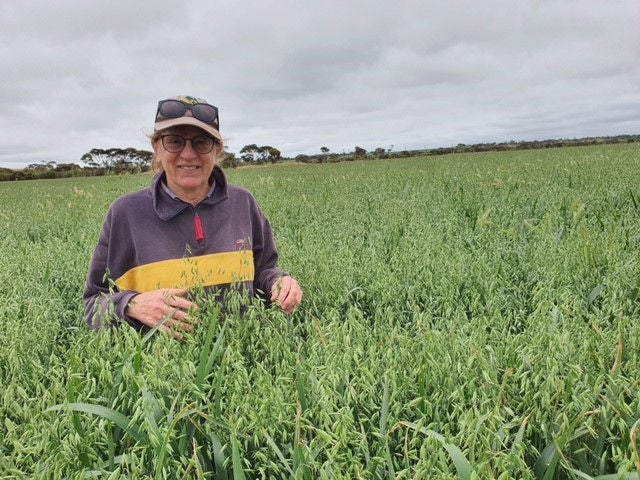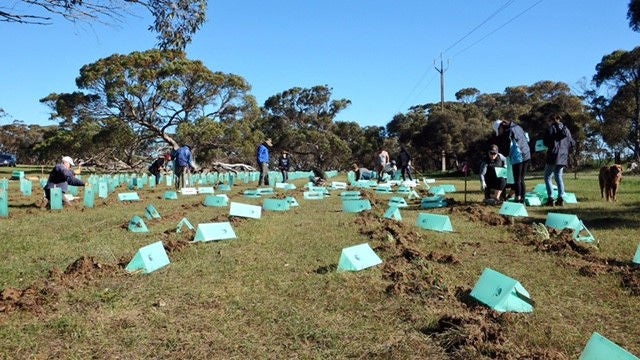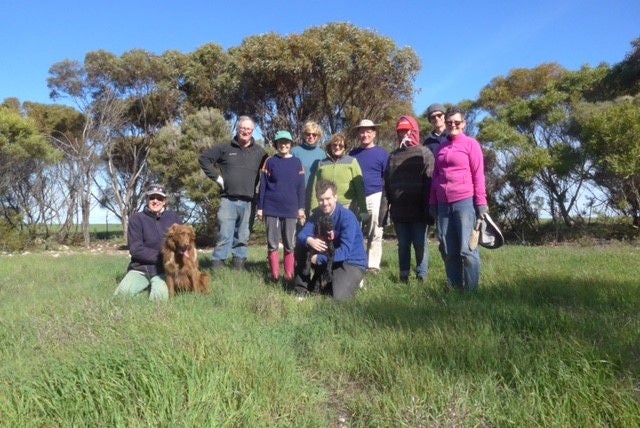Posted by on
10/07/2025
Jane Greenslade’s passion for the environment is palpable in all she says and does, not only on her Yorke Peninsula properties but in her efforts to bring people together to learn and take meaningful action.
With over 1,350 hectares under her care, including the family farm settled by her great-grandparents in 1876, Jane has helped protect areas of remnant vegetation and planted kilometres of shelterbelts over the past four decades.
“As farmers we are all land stewards,” Jane explains. “If we don’t have a fully functioning environment, we run the risk of threatening our productive capacity.”
Jane credits her parent’s love for the land, especially her father’s, combined with growing up in a heavily cleared landscape, as the driving force behind her ethos. On the Yorke Peninsula the land, she says, was originally leasehold, and converted to freehold on the condition that 40 hectares were cleared a year.
“Consequently, the farmers that settled here were very efficient, only leaving scrub on shallow, rocky or unproductive soils,” Jane says. “They often cleared from fence line to fence line. Quite literally.”
Her father, who was born after the clearing, initiated tree planting on the property. “He planted native trees and as was the custom, some pine trees around the houses, sheds and stock paddocks for wind breaks and shelter,” Jane recalls. “He saw the value of trees in the landscape and tried to conserve what was left; his passion and curiosity for his natural environment imprinted on me.”
Since returning to the farm in 1987, Jane has expanded on her father’s work. Running a mixed cropping and beef enterprise, using no-till and stubble retention, Jane was keen to expand shelterbelts into the cropping paddocks.
“Right from the beginning when I came home, I had an interest in putting vegetation back into the landscape.”

In partnership with Trees For Life, a South Australian organisation, more than 20,000 trees have been planted across her properties with the help of city volunteers.
“We plant trees every year on the farm,” she says. “There are tree rows all over the farm due to this collaborative partnership with this group of now friends.”
Growing into long-standing friendships, Jane credits Trees for Life as a means to help bridge the rural-city divide and promote revegetation long before carbon farming had been considered. Saying, “They are unique to South Australia, and I believe should receive permanent support from state and federal government.”
Receiving a Nuffield Farming Scholarship in 1996, enabled Jane to study the value and implementation of mosaic landscapes, including shelterbelts, and holistic resource management. “Seeing what other farmers have achieved is very motivating and gave me greater confidence to build on the integration and conservation of native vegetation in my farming landscape.”
Planting shelterbelts in-between, and next to trees planted by her father and pockets of remnant vegetation expanded following her scholarship. These shelterbelts have not only provided shelter for livestock but wildlife corridors for birds, animals, and insects, she says.
“I have always thought that at least if there is a roadside with vegetation, or a tree belt with vegetation, or tree rows within paddocks, there is a refuge for beneficial insects, birds and native fauna.”
Jane is also involved in a number of sustainably-focussed research projects, including looking at the feasibility of flies as a biological control for snails – a pest for grain growers. “The flies which predate the snails need pollen to survive over summer,” she says. “Flowering native plants in the tree lines and scrubs can provide this food. In time, snail predation should hopefully reduce our reliance on snail bait.”

The original home block, where Jane resides, is now leased and share-farmed. These arrangements, she says, are with like-minded young farmers “who are receptive to my ideas and have a similar value set.
“It’s working well as we challenge each other on our farming systems with a strong focus on sustainability and a ‘whole of picture’ approach to environmental health. For instance, we have introduced chicken manure and bio solids, as soil ameliorants, especially to enhance soil organic matter.” Adding to Jane’s farming practices, over the years, of stubble retention, minimum till and reduced compaction.
This arrangement has given Jane more time “to focus on the vegetation side of the farm and her wider environment.” Not only on the home farm, but also on two recently acquired parcels of land. One of which, she purchased with friends to help protect remnant vegetation.
“A few years ago, a block of well-cared for coastal scrub that belonged to a friend came up for sale,” she explains. “It was 60 hectares, and I thought, I have enough friends in the city who have expressed to me over the years that they are interested in conserving native vegetation – so I am going to put this to the test.”
A group of 17 people now manage the land collaboratively, undertaking tree planting, feral pest and weed management and exclusion of uninvited 4WD in the fragile sandhills. The group is exploring heritage listing options to protect the remnant, rehabilitated, and revegetated areas indefinitely.
“Long-term protection of on-farm vegetation is something I would like to see happen in my lifetime.”
Jane’s drive to safeguard native vegetation for future generations motivates her forward. This sees her bring people together to link them with others that have the knowledge and means to make a difference.
“I am a land steward but am only here for a blink of an eye,” she says. “I want the land passed on in a good state. And that includes having trees and vegetation in the landscape as well as healthy, productive farming soil.”
“I would be very disappointed if the native vegetation now established on the farm was not cared for by future generations. My hope is that it will be maintained, valued and possibly expanded to support an even more diverse environment.”
Jane believes that it will take a wider, more cohesive community effort.
“I think we are all equal custodians of our surroundings and our greater environment and indeed the planet. What I am attempting to do on my farm is but a dip in a much bigger ocean. Hopefully, momentum will continue to grow for thriving food production systems operating within thriving natural endemic environmental systems.
“It is not yet a holistic picture. We should be feeling as though we are all in this together and working forward to find a solution to the environmental challenges, we are all facing.”
Disclaimer: This case study is published by Rabobank Australia Limited ABN 50 001 621 129 AFSL 234700 and Coöperatieve Rabobank U.A. (Australia Branch) ABN 70003917655 AFSL 238446 (together, “we”, “us” or “our”). The information in this case study is based on information provided to us by the client(s) to whom it relates. We have attempted to accurately reflect that information in this case study but do not represent, guarantee or warrant that is complete or accurate. The views and opinions expressed are those of the client(s) quoted as making them or are paraphrased from information provided by them, and reflect their experiences, judgements and opinions. The views and opinions expressed are those of the client(s) and do not necessarily reflect our policy or position or the policy or position of our related entities or the views or opinions of any officer, employee, representative contractor or other representative of Rabobank or its related entities.
